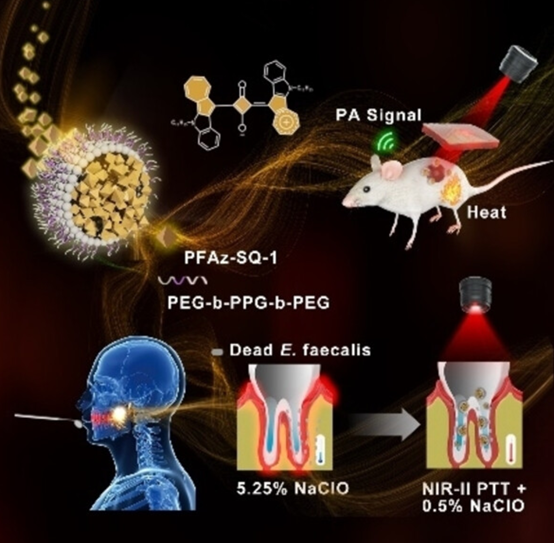State Key Laboratory of Medicinal Chemical Biology
The second near-infrared (NIR-II) theranostics offer new opportunities for precise disease phototheranostic due to the enhanced tissue penetration and higher maximum permissible exposure of NIR-II light. However, traditional regimens lacking effective NIR-II absorption and uncontrollable excited-state energy decay pathways often result in insufficient theranostic outcomes. Herein a phototheranostic nano-agent (PS-1 NPs) based on azulenyl squaraine derivatives with a strong NIR-II absorption band centered at 1092 nm is reported, allowing almost all absorbed excitation energy to dissipate through non-radiative decay pathways, leading to high photothermal conversion efficiency (90.98 %) and strong photoacoustic response. Both in vitro and in vivo photoacoustic/photothermal therapy results demonstrate enhanced deep tissue cancer theranostic performance of PS-1 NPs. Even in the 5 mm deep-seated tumor model, PS-1 NPs demonstrated a satisfactory anti-tumor effect in photoacoustic imaging-guided photothermal therapy. Moreover, for the human extracted tooth root canal infection model, the synergistic outcomes of the photothermal effect of PS-1 NPs and 0.5 % NaClO solution resulted in therapeutic efficacy comparable to the clinical gold standard irrigation agent 5.25 % NaClO, opening up possibilities for the expansion of NIR-II theranostic agents in oral medicine.

 津公网安备 12010402001780号
津公网安备 12010402001780号








